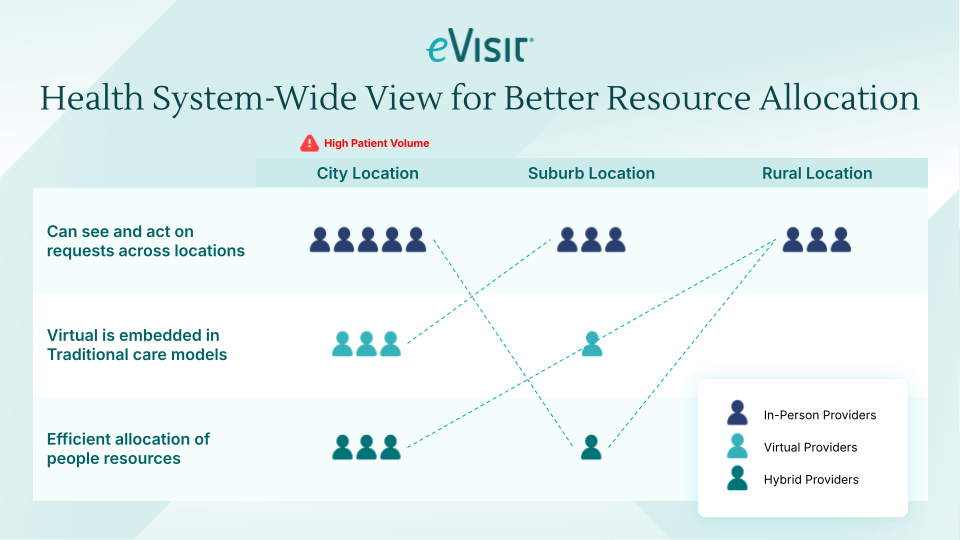Enhancing Digital Care Adoption and Scalability
Scaling Advanced Care Models
eVisit partners with care delivery systems to rearchitect care delivery by implementing digital care models, integrating digital models into workflows, and scaling across the care continuum.



HOW WE HELP
Advancing Strategic Goals with Digital Care Models
eVisit partners with public and private healthcare delivery systems to align digital care models with strategic objectives: triage patients faster, improve throughput, increase patient satisfaction, and drive new revenue.

How eVisit Helps Adopt and Scale Digital Care Models
eVisit integrates directly into existing infrastructure to simplify workflows and deliver decision-ready intelligence, rules-based automation, and human intervention and coordination.
Our platform and orchestration layer help clinicians, care teams, and operational leaders transform data into real-time insights that trigger and automate the workflows that care teams need most. By liberating data from fragmented systems and aligning resources to patient needs in real time, eVisit helps health care organizations adopt care models that contain costs, optimize utilization across the entire episode of care, and scale digital care services.





